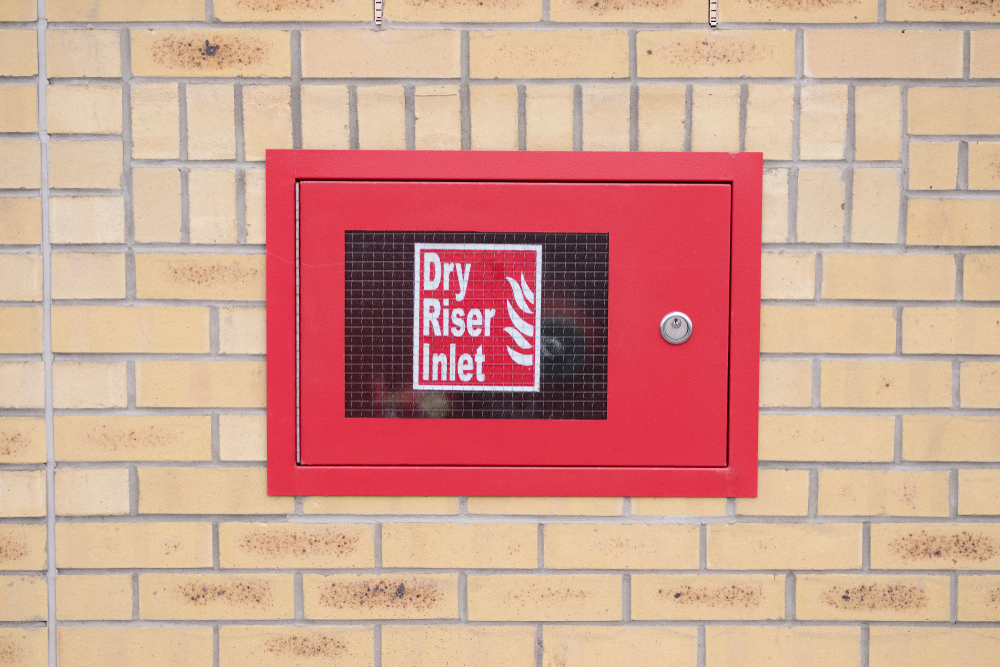Dry risers are vital when it comes to firefighters fighting a fire as they enable the fire brigade to access water on all floors of a building, which is why ensure your dry riser components need to be regularly tested and their maintenance is up to date. The dry riser is made up of a number of components and we came across this article on fire-risk-assessment-network.com which easily explains the separate components and what role they play:
External Outlets
Typically housed in a cabinet enclosure labelled “Dry Riser Inlet”, external outlets are meant to facilitate the connection of fire service water supplies. At least two BS instantaneous male couplings are found in this cabinet. The same space also houses the drain valve used to drain the entire system of any water after fire fighting or test drills.
To facilitate easy and convenient access while still remaining secure, these housing cabinets should be immediately accessible and safe from vandalism. For swift access during fire emergencies, these cabinets are designed with a breakable area.
Pipework
Another vital component of a dry riser is vertical piping. Dry riser piping does not have any water. Made up of galvanised steel pipes, the vertical piping spans the entire height of the building, from ground level, up or down through the different levels.
An air valve is fitted at the top of the pipework to allow for the release of air whenever the system is filled with water.
Fire resisting shafts or enclosures surround the pipework from bottom to top.
The internal diameter of the pipes used is prescribed under British Standards – and is dependent primarily on each structure’s requirements. For instance, a 4-inch internal diameter pipe is required for occupied buildings rising higher than 18 meters and with a single outlet per level.
On the other hand, a broader 6-inch internal diameter pipe is prescribed for taller buildings with more than one outlet per level. It is worth noting that four-way inlet valve heads are normally required where larger diameter pipes are used.
Overall, the overall performance of the entire pipework, and with it the dry riser system, depends on its design, layout, and construction.
Outlet Points
Also referred to as Landing Valves (or Landing Outlets or Stand Pipes), outlet points within the building allow firefighters to connect their hoses to the dry riser on each floor/level.
A double or single BS instantaneous female outlet controlled by a gate valve makes up every outlet. In addition to regular outlets within the building, a testing outlet may be provided for at roof level.
Like their inlet counterparts, these components may be installed inside protective cabinets – with a breakable area for swift access during fire emergencies. Furthermore, these outlets are normally located within a fire-protected space, including fire escape lobbies, staircases or enclosures.
You can read the full article on fire-risk-assessment-network.com.
At Total Safe UK, we cover dry riser testing and dry riser maintenance in businesses, schools, and a wide range of buildings throughout London and the south east. Contact us today to book your dry riser testing, dry riser maintenance and see what other fire safety services we offer.

